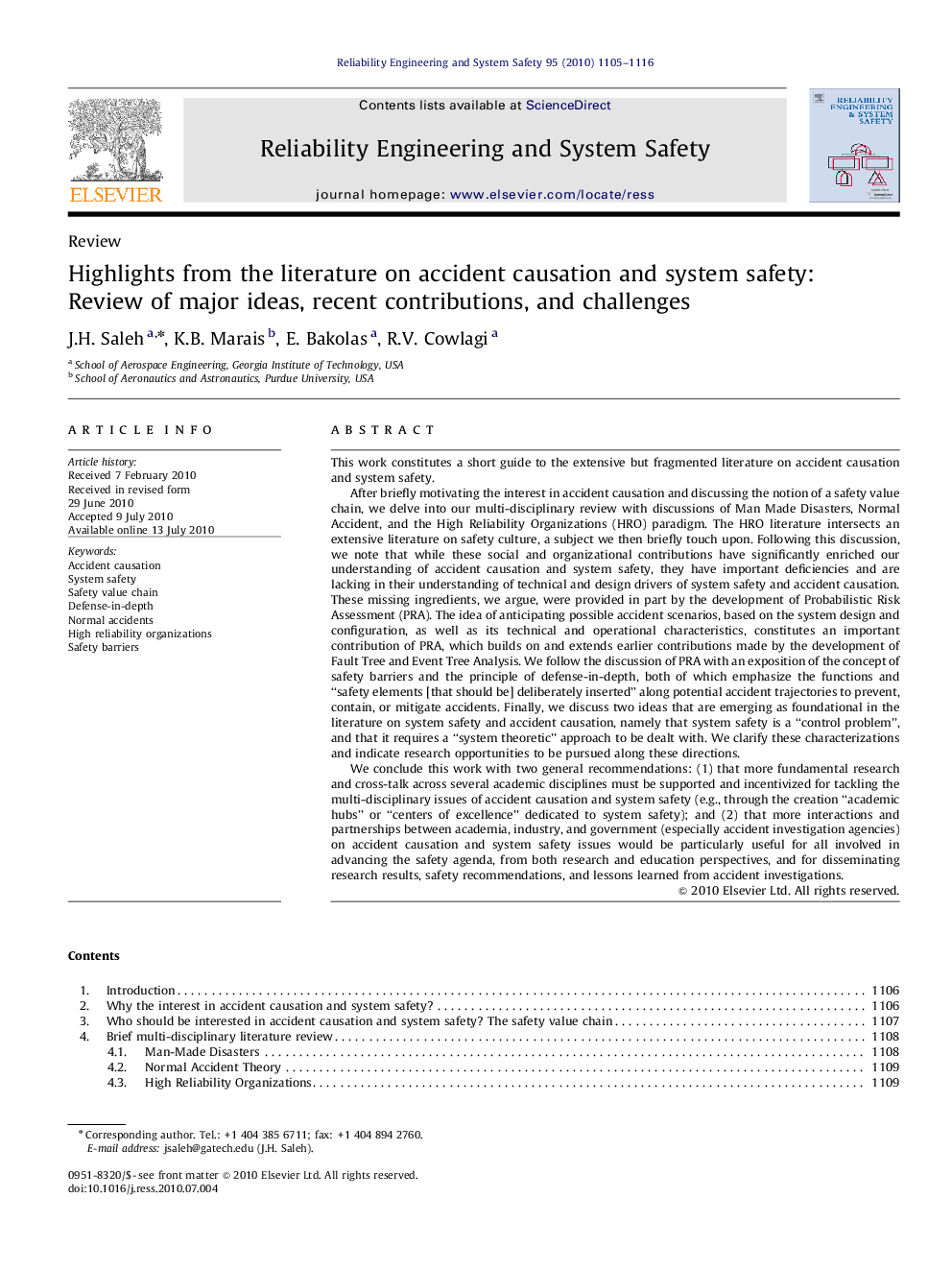| Article ID | Journal | Published Year | Pages | File Type |
|---|---|---|---|---|
| 806964 | Reliability Engineering & System Safety | 2010 | 12 Pages |
This work constitutes a short guide to the extensive but fragmented literature on accident causation and system safety.After briefly motivating the interest in accident causation and discussing the notion of a safety value chain, we delve into our multi-disciplinary review with discussions of Man Made Disasters, Normal Accident, and the High Reliability Organizations (HRO) paradigm. The HRO literature intersects an extensive literature on safety culture, a subject we then briefly touch upon. Following this discussion, we note that while these social and organizational contributions have significantly enriched our understanding of accident causation and system safety, they have important deficiencies and are lacking in their understanding of technical and design drivers of system safety and accident causation. These missing ingredients, we argue, were provided in part by the development of Probabilistic Risk Assessment (PRA). The idea of anticipating possible accident scenarios, based on the system design and configuration, as well as its technical and operational characteristics, constitutes an important contribution of PRA, which builds on and extends earlier contributions made by the development of Fault Tree and Event Tree Analysis. We follow the discussion of PRA with an exposition of the concept of safety barriers and the principle of defense-in-depth, both of which emphasize the functions and “safety elements [that should be] deliberately inserted” along potential accident trajectories to prevent, contain, or mitigate accidents. Finally, we discuss two ideas that are emerging as foundational in the literature on system safety and accident causation, namely that system safety is a “control problem”, and that it requires a “system theoretic” approach to be dealt with. We clarify these characterizations and indicate research opportunities to be pursued along these directions.We conclude this work with two general recommendations: (1) that more fundamental research and cross-talk across several academic disciplines must be supported and incentivized for tackling the multi-disciplinary issues of accident causation and system safety (e.g., through the creation “academic hubs” or “centers of excellence” dedicated to system safety); and (2) that more interactions and partnerships between academia, industry, and government (especially accident investigation agencies) on accident causation and system safety issues would be particularly useful for all involved in advancing the safety agenda, from both research and education perspectives, and for disseminating research results, safety recommendations, and lessons learned from accident investigations.
